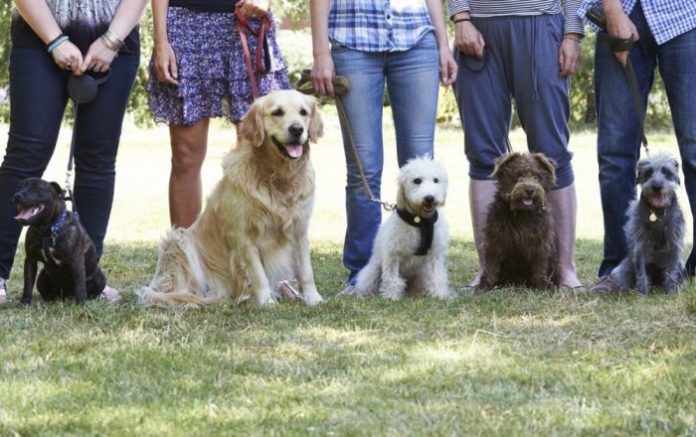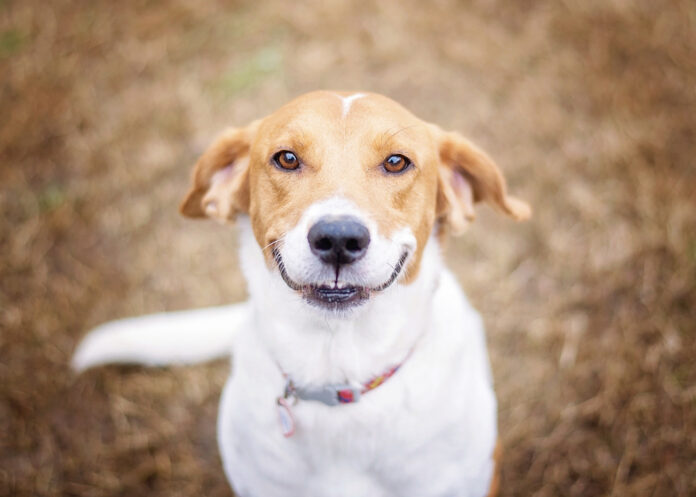How to select a dog training class

Know what to ask and look for when choosing the right training class for you and your dog.
Most of us recognize the importance of training as part of creating a safe and healthy environment for our dogs. Positive force-free training teaches dogs the skills they need to live successfully in the human world. It also provides mental and physical stimulation, and strengthens the relationship between human and dog. Dog training classes are a great way to do this, and they can help strengthen your bond of trust while introducing your dog to new environments. But how do you know which training class is right for you and your dog?
Positive and force-free training only!
When selecting a training class, the training methods you will be using should be your number one concern. Positive reinforcement training applies the principles of behavioral science and learning theory and has been proven to be the safest, most effective and kindest training method. It entails the use of food, play, affection and other rewards that motivate your dog. Physical punishment is never applied. Stay well clear of trainers who recommend hitting, kicking or jerking and/or the use of aversive tools, such as choke collars, prong collars and shock collars. Other red flags are the use of the “alpha roll” and the terms “leash corrections”, “dominance theory” and “pack leader”. These concepts stem from outdated so-called “traditional training” methods. And while “balanced training” may sound nice, it means that both positive reinforcement, as well as physical punishment, are used.
Private vs. group class
Group classes are best suited for dogs that are friendly towards other dogs and people. They are usually taught on-leash to ensure every dog’s safety. If your dog is friendly, group classes are a wonderful opportunity for socialization and training around distractions.
If your dog shows any aggression, is very fearful, needs help with specific behavior problems, or if you simply want one-on-one attention from a professional, then a private class is your best choice. The trainer will set up a behavior modification plan tailored specifically to your dog’s needs and your training goals. Naturally, private classes are more expensive than group classes.
Where to find classes and trainers
Animal shelters and Humane Societies, rescue organizations, veterinary offices and pet stores often work with trainers and may recommend one to you. Some shelters and pet stores offer group training classes at their facilities and will allow you to observe their classes before you register. You may also find a local trainer through a professional dog trainer organization’s website. If you know someone who has worked with a trainer, ask them if they would recommend him or her.
Questions to ask the trainer
A professional trainer will not only be happy to answer your questions but will encourage you to ask them. If the trainer is reluctant to address your questions or is unwilling to explain his or her methods, look elsewhere. Good trainers have no secret training methods and are happy to share their knowledge with you. After all, you will be the one training your dog.
Here are some questions to ask:
What training methods do you use?
The answer should include the terms “force-free”, “positive reinforcement” or “reward based”, as these describe a positive training ideology.
How do you address unwanted behaviors (like jumping or stealing food off the counter)?
In positive training, unwanted behaviors are addressed through prevention and management and the teaching of substitute behaviors. If the trainer’s answer is to punish or discipline the dog, walk away.
Are you a certified professional dog trainer?
Dog training is an unregulated profession. This means that literally anyone may call themselves a dog trainer. While certification does not guarantee the trainer is best qualified to train your dog, it shows a certain degree of professionalism. Certified trainers take their jobs seriously and have put in the effort, time and money to complete a dog training program. That being said, be aware that not every certified dog trainer is automatically a positive reinforcement trainer.
Do you have experience with my dog’s particular training needs?
Some dogs need an experienced trainer who can deal with problems such as separation anxiety, leash reactivity, resource guarding or aggression. In those cases, private in-home sessions are called for.
Can you guarantee a successful outcome?
This is a trick question. The answer should be “no”. Professional trainers never guarantee the training outcome. We simply cannot guarantee the future behavior of another living being. In addition, training success depends on many factors — including your dog’s health, his past (training) experience, his daily routine, his environment — and also on your own training skills and commitment.
Training facilities
It is not uncommon to hold group classes in public parking lots or parks. This can be a good opportunity for training around distractions, but the area has to be safe and clean. A parking lot with heavy traffic or a park with lots of dogs running around off-leash is not safe. You will be so busy protecting your dog from moving cars or unfamiliar dogs that neither of you will be able to focus on the class. Often, a clean indoor space is preferred to allow puppies off-leash play breaks.

What to expect from your first training class
- When you first arrive at a group class, make sure you keep a safe distance from the other dogs. It should be at least 6’ or more. Prevent any greetings between dogs unless the instructor allows it and demonstrates how to do it safely.
- Expect your dog to be excited and seemingly out of control. This is normal. At this time, don’t ask him to sit, lie down or do anything. The adrenaline rush going through your dog’s body prevents him from listening to you. Stay calm and wait for him to calm down as well. Your calmness will transfer to your dog.
- Once your dog has calmed down, give him some treats without asking for any behaviors. You are simply creating a positive association with the new place. By the end of the class, most dogs are calm and relaxed. Over the next few weeks, as the dogs get familiar with the place and the training routine, most calm down a lot faster.
- Don’t stress or feel embarrassed if your dog doesn’t do a behavior. That’s what class is for. You are all there to learn. This should be a fun time for you and your dog!
If necessary, cut the trainer loose!
If at any time you feel uncomfortable with the way the trainer treats you or your dog, speak up. Never allow the trainer to hit, jerk or otherwise hurt or yell at your dog. Intervene immediately and end the session. A good positive reinforcement trainer will always strive to keep your dog under his stress management threshold and will never use physical or emotional punishment.
How to prepare for your first training class
- If your dog has a lot of energy, exercise him before class so he can expend some of that energy, but don’t tire him out so much that he sleeps through class. Give your dog the opportunity to go to the bathroom right before class.
- Check that your dog’s collar and harness are secure. You don’t want your dog to slip out and run up to other dogs, or worse, into traffic if the class is held outside.
- Carry plenty of high-value treats in a treat pouch. High-value treats are real meats, such as chicken, turkey, hamburger or steak. Cheese is also a favorite. Make sure your dog is already used to these treats.
- Bring a mat, towel or bed to provide your dog a comfortable place to relax between exercises.
- Bring a bowl and water. The treats you will be feeding may make your dog thirsty.
- Wear comfortable clothes and non-slippery shoes; you may need to kneel down, a dog may jump on you, or your dog might pull you.
Size of group classes
Too many dogs in a class means you will be getting less one-on-one attention. Classes should allow a maximum of six to eight dogs unless the instructor has assistants, in which case the maximum number of students may be greater.
Dog training classes should be fun for both you and your dog. Choosing the right trainer will ensure a safe and enjoyable learning experience.




